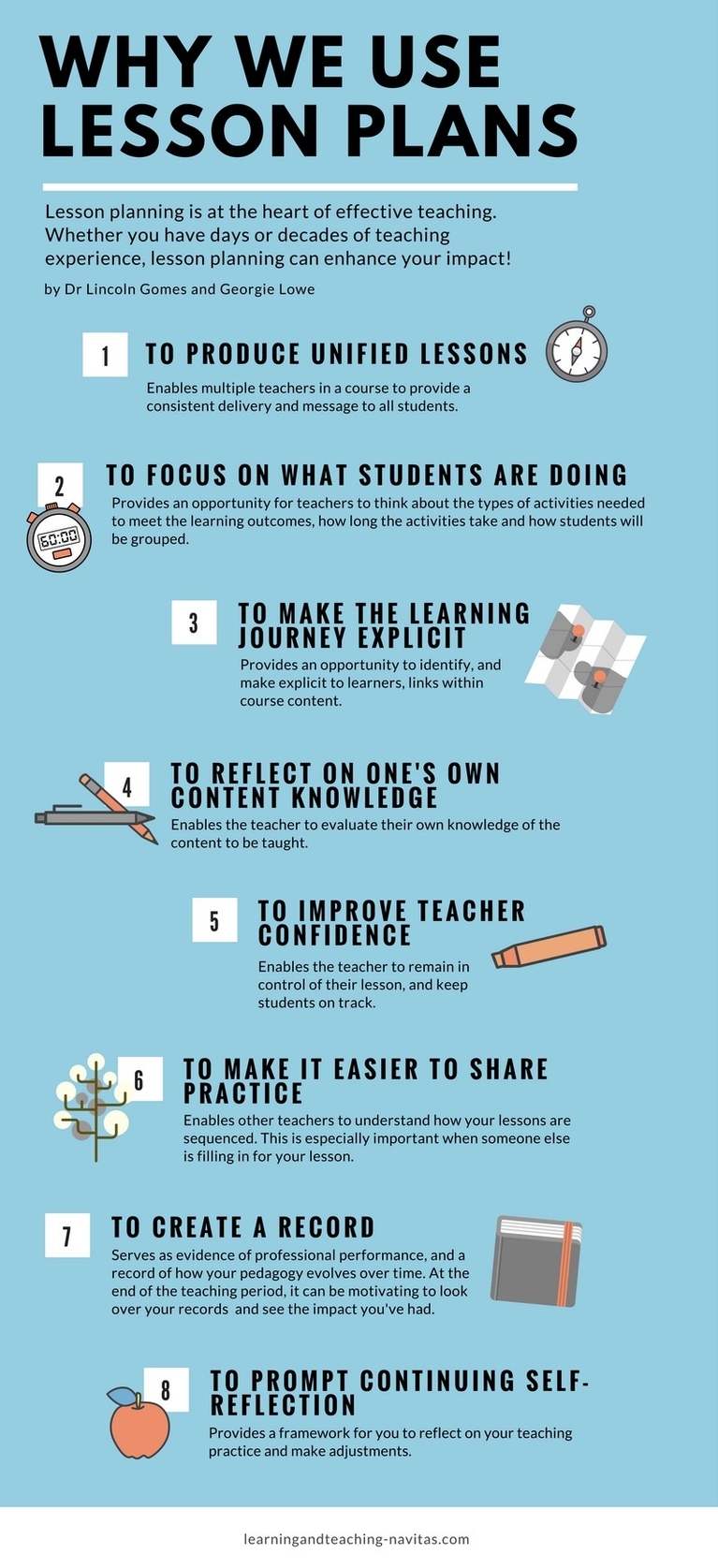
Lesson planning is a crucial aspect of teaching that involves designing a detailed outline of the course of instruction for a lesson. It is a process that helps teachers to organize their thoughts, identify the most important skills and content for students to take away from the class, and map out how each class fits into and prepares students to meet the overall course learning outcomes. Planning lessons in advance can help boost a teacher’s confidence level and provide a sense of consistency across the course, giving students the impression that lectures will always include activities to help them build the necessary skills to succeed in the course and in their program .
A well-organized lesson plan template can help instructors to structure their classes around class-specific learning outcomes. These outcomes are written using the same technique as course-level learning outcomes but focus on what will be accomplished in a smaller time slot. The lesson plan should be focused on SMART learning outcomes, which are Specific, Measurable/Observable by the instructor, Attainable by students, Relevant to students/course/program, and Timed well for the class period. Instructors should clarify links between material and explicitly identify transitions between topics. There should be a manageable amount of information for the time limit, and all materials and activities should be related to student learning. Interactive lessons encourage active learning, give students a chance to illustrate or apply learning, allow time for questions, and seek to confirm comprehension of material .
The CLAASS model of lesson planning is a way of putting interactive teaching/learning into practice. It is a teaching model that allows instructors to plan lessons based on sound pedagogical theory. The model consists of six steps to guide instructors through the process of creating a realistic and effective lesson plan. The steps are:
1. Connect: Lead into the lesson in a way that sets the tone for the next hour. This can be done by telling a story, asking a provocative question, presenting a challenge, sharing a current news item, showing a short video, reviewing a concept from the last class, and explaining how it relates to today’s lesson.
2. Learn: Identify the most important skills and/or content for students to take away from this particular class. Once identified, outline the relationships between these key takeaways, the remainder of the course content, and the course-level learning outcomes.
3. Activate: Encourage active learning, give students a chance to illustrate or apply learning, allow time for questions, and seek to confirm comprehension of material.
4. A
